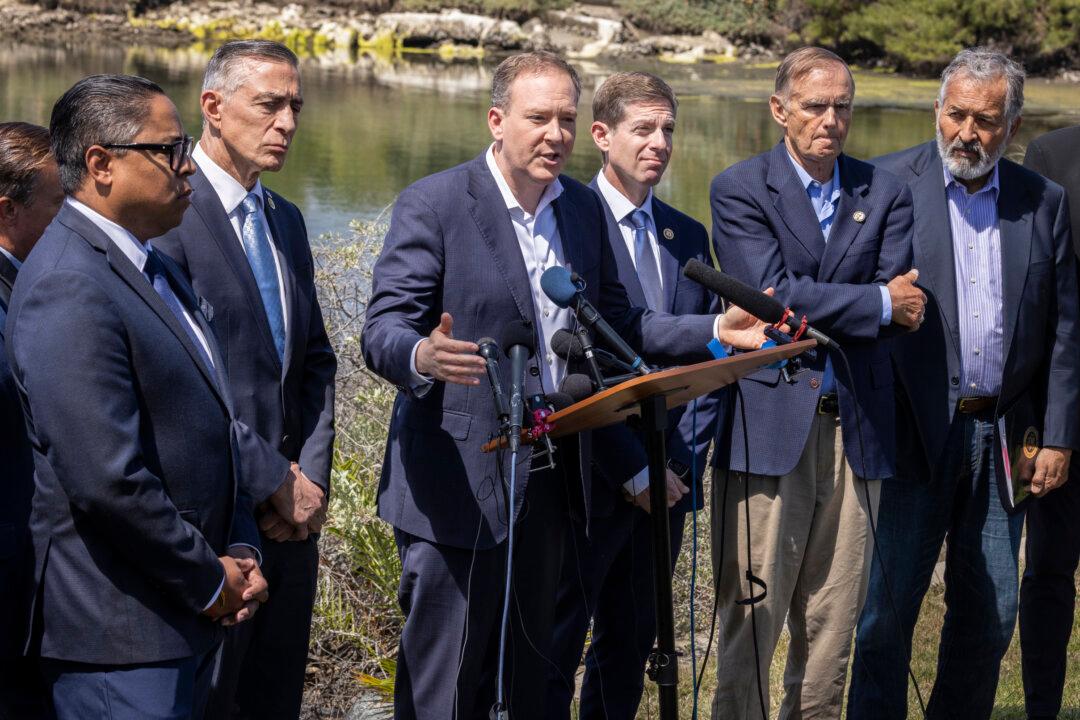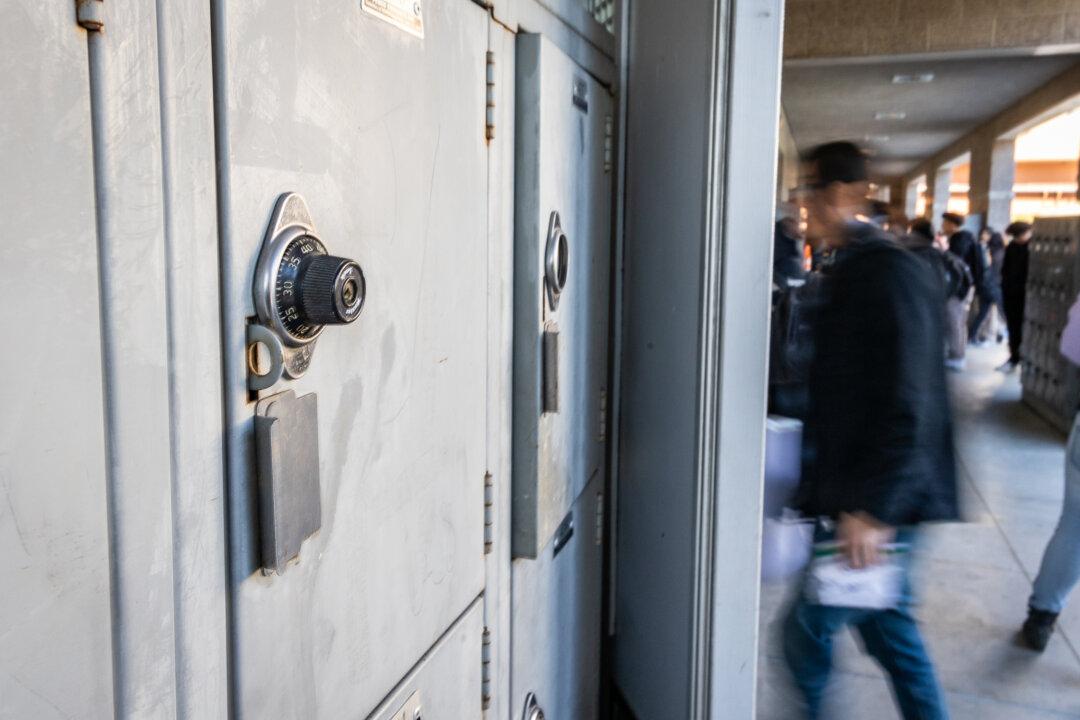SAN DIEGO—U.S. Environmental Protection Agency (EPA) Administrator Lee Zeldin visited San Diego April 22, aiming for collaborative solutions and actions to end the Tijuana River sewage crisis.
The visit “is very important for us to make sure that we aren’t just seeing and hearing firsthand on the ground in Southern California,” Zelding said at the press conference, “but ensuring that the path forward is one of max collaboration and extreme urgency to end a crisis that should have ended a long time ago.”
Zeldin said his counterpart, the Mexican environmental secretary Alicia Bárcena, had conveyed in their meeting the evening of April 21, the willingness of the Mexican president, Claudia Sheinbaum, to “have a strong collaborative relationship” with the United States, “to finally solve the issue.”
Officials said that over the past five years, more than 100 billion gallons of sewage water have been discharged into the Tijuana River, which flows to the U.S. side and enters the Pacific Ocean, causing air odors, health concerns, and beach closures.
Bipartisan Effort
Zeldin said that “a lot of good, insightful ideas” aimed to resolve the crisis had come out of a roundtable discussion with bipartisan leaders before the press conference.“One comprehensive list of everything that we believe with full confidence is going to end the crisis” would be developed over the next 24 hours, he told the media.
Zeldin said it is a bipartisan effort from the U.S. side.
The press conference was joined by local, state, and federal elected officials, including San Diego Congressional delegates Reps. Darrell Issa, Mike Levin, and Juan Vargas.
Levin and Vargas, both Democrats, said Zeldin had a record of working across the aisle to get things done when he was a Republican representative from New York in Congress from 2015 to 2023.
“This is not an issue in Republicans or Democrats. This is an American issue,” Vargas said.
“This is a bipartisan issue, and it needs to continue to be if we’re going to solve it,” Levin told The Epoch Times.
Leaders Look for Permanent Solutions
“We don’t want the 70 percent solution or the 90 percent solution, but we all need to be on the same page on the 100 percent solution from the U.S. side,” Zeldin said, adding that if all things on his list get done, “this crisis is over.”That would include the operation and maintenance commitment of the water treatment facilities on the Mexican side, which Zeldin said had been lacking, causing Mexico’s side of the infrastructure to deteriorate.
Opportunity for Collaboration with Mexico
In responding to a question from The Epoch Times, Zeldin emphasized the urgency and opportunity for collaboration in solving the crisis.“Americans on our side of the border who have been dealing with this for decades are out of patience,” Zeldin said. “There’s a very limited opportunity,” he said. “What’s being communicated by the new Mexican president is an intense desire to fully resolve this situation.”
Vargas, whose district includes the border region, expressed hope for collaboration with the new Mexican administration and its president, Sheinbaum.
He said in the past, Mexico had not cared much about the sewage flowing into the United States. But now it has a new president who is an “environmental scientist, and she has committed to doing this. And I hope she does follow through with what she said,” Vargas said.
Issa told The Epoch Times that he also thought the opportunity for collaboration between the two countries was high.
He said that President Donald Trump has been very keen on solving the sewage crisis since his first time in the White House, and now he is back, and Mexico also has a new president.
“On this issue, when you look at a president [whose] whole career has been environment, and a president on this side, whose whole career has been in construction ... you realize that it’s a perfect marriage to care about this issue,” he said, making the connection that “construction is being mandated to do all kinds of things, never tolerating something like this.”
If the current Mexican president “cares as much as it appears, then this is an opportunity,” he said.

Mexico Needs to Clean Up the Pollution
Zeldin has been tough on making Mexico responsible for the pollution in the Tijuana River.On a March 8 post on X, he wrote that the pollution in the Tijuana River is “unacceptable” and that “Mexico must honor its commitments to control this pollution and sewage!”
Zeldin said at the April 22 press conference that while collaboration is needed to stop the flow of sewage to the U.S. side, Mexico still needs “to fulfill its part in cleaning up the contamination that they caused.”
“They cannot view this as a U.S. problem just because their contamination reached U.S. soil,” he said.
“We need Mexico to not just commit to all the projects that will stop the flow, but in order to actually finish this project, they’re going to need to commit to that final cleanup.”

Superfund Designation Petition
San Diego leaders, including County Supervisor Terra Lawson-Remer and Mayor of Imperial Beach, the border city that has been most affected by the sewage pollution, had petitioned EPA multiple times to designate the Lower Tijuana River Valley as a Superfund site, so the federal government can fund and bring resources to the cleanups in the area.The EPA had rejected the petitions.
Although he did not mention the Superfund site petition, Zeldin said at the press conference, “clean up the current contamination, that feel good moment will last but a day ... We have to stop the flow in.”






